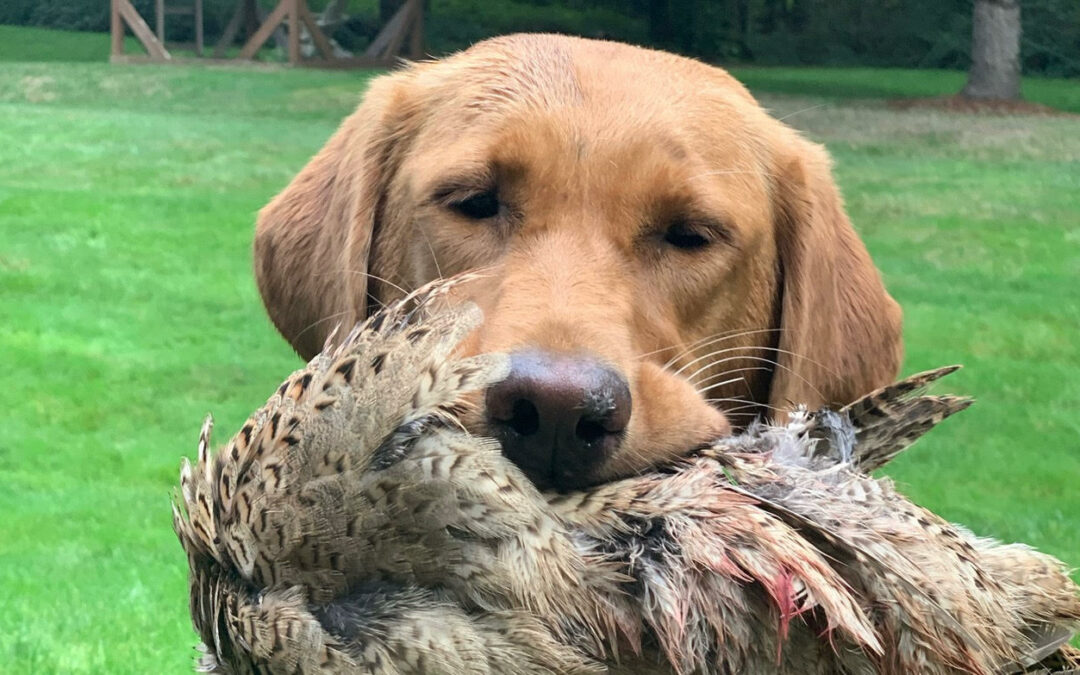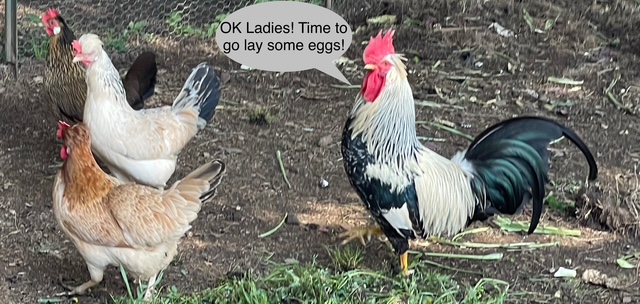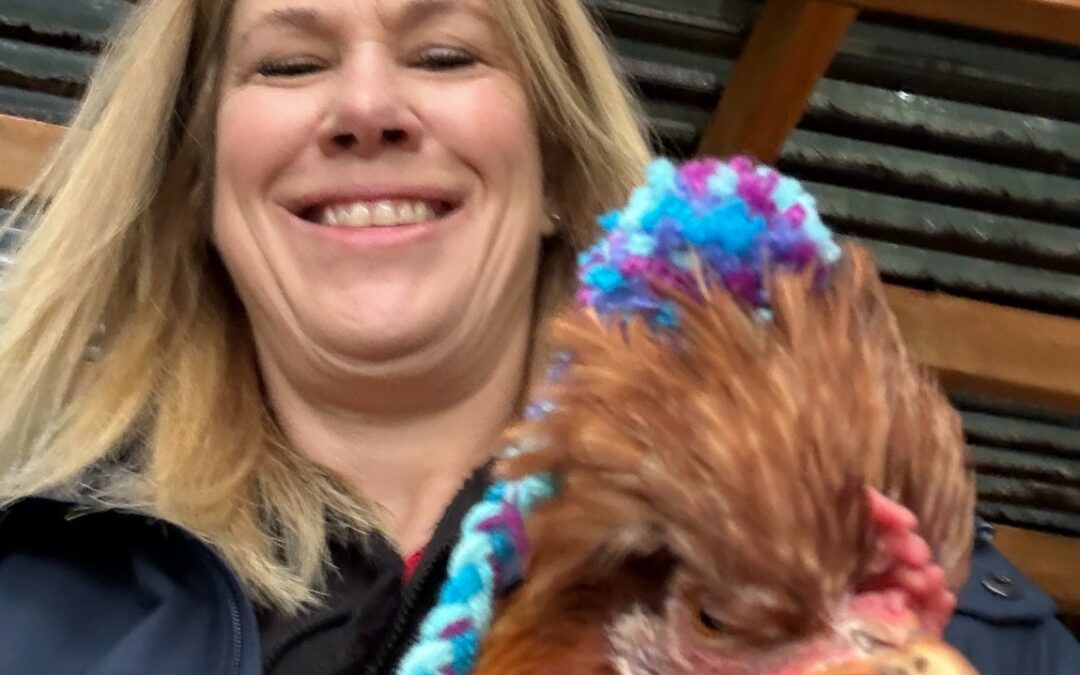
A Humbling Realization
I used to say that my dogs were five for five in catching a rogue chicken, while my chickens were zero for five in surviving. It made sense. I had two bird hunting dogs trained to retrieve birds. Yes, I hated losing a chicken, but who can blame me or the dogs for those odds?
During a recent trip, my dog sitter texted me to say that there was a hole in my chicken netting and one of my chickens had escaped. Of course, my first thought was that I’m down another chicken (which really isn’t good because of the cost of eggs). Her subsequent text said she was able to retrieve the hen and get her back in the coop. Then I thought, oh good, JacX wasn’t up near the coop. Her next text stated that she managed to get JacX back to the house before she went to retrieve the hen.
What? How did she do that? Every time I’ve been near the chickens with the dogs, and a hen escaped, there was no way I could catch either of my dogs. I’ve lost my voice yelling at them to leave the chickens alone while my poor chicken tried to fly to save her life. And not once was I able to get either of my dogs to give up the retrieve and come back to me.
Yet, my dog sitter could do that.
I’ll be honest, I don’t even want to ask her how she did it because I fear it will reveal that my dog handling skills are not as good as I believe they are. So, I’m hiding from the truth, trying to accept my new reality.
How many of you reading this have had that same experience—the realization that there are others who can do something you pride yourself on being an expert at much better than you? Or if I delegate this task to someone else, what will I do with my time? Now, I realize that I can’t delegate my dog-wrangling activities to my dog sitter, but if I’m not as good at that as I think I am, what else am I pretending to be great at when, in reality, I’m not?
Being an effective leader means looking inward, acknowledging shortcomings, and delegating those items to others who are better suited. But, it is hard to let go, either due to a sense of obligation or a desire to do those things.
I was working with a client who had hit the ceiling. Their product was becoming outdated, resulting in fewer new opportunities and a plateau. The entire team was frustrated. They knew they needed to try something new, but the owner was so tied up in running the business that she didn’t have time to start exploring new products or new ways to attract new opportunities.
As the team worked through what was getting in the owner’s way, it became clear that she was hanging onto the role she had when the company was a quarter of its current revenue. She was trying to do all the employee reviews, hiring, and even the primary contact to many of their large customers.
So, I challenged her by asking, “What is the highest and best use of your time?” And then we sat in silence watching her work through the internal struggle. After what felt like an eternity, she said, “I need to let all of you do your job. I need to let go of all the control.” The team exhaled and said they were ready to take that responsibility.
But, it didn’t stop at the owner. I continue to challenge each member of the team, “what is the highest and best use of your time?” And following the lead of the owner, they began to acknowledge what they needed to do. By the end of the session, the entire team was in a completely different mindset, ready to delegate some of their tasks so they could go execute on their new priorities.
So, what about you? Are you hanging on to responsibilities in your business that would be better completed by someone else? Is that control keeping your organization from breaking through the ceiling? Are you finding it hard to accept that you must let go so you can elevate yourself to “unique ability”? If so, reach out to me. While this process might be challenging, on the other side is a new reality with a company that is poised for growth.




